The adoption of Islam in the VII century led to a significant turning point in Azerbaijan's historical fate.
Islam stimulated the formation of unit people and language, had a decisive influence on this process. Religion unity among Turkish and non-Turkish ethnic communities caused the formation of unit traditions, expansion of relationship ties, deepening of the integration process throughout Azerbaijan. Islam unified Turkish and non-Turkish ethnic communities, adopted it, under unit Turkish-Islam flag against Byzantium, attempting to include the Southern Caucasus into the influence sphere of Christianity, Armenian and Georgian feudal lords under Bizantium protection.
Nevertheless, the Christian population of Albania stayed beyond of influence sphere of Islam during the Arabic occupation, as converting to Islam of people of monotheistic worship contradicted the principles of Islam. Thus, religious parting appeared in the country: Turkish-Moslem population, presented majority and spread throughout the country, including Albanians, adopted Islam, and Christian population presented minority and lived mainly in the western regions of the Country, including Albanians. The struggle of Armenian and Georgian churches for including Christian Albanians in the sphere of their religious-political and ethnic influence became stronger since this period. Azerbaijan turned into a confrontation point between Islam and Christianity. In time Christian Albanians of Western Azerbaijan, including mountain territories of Karabakh, became subject of Armenianization and Gregorianization. Christian Albanians, who lived in the northwest of Azerbaijan, were the target of the Georgian church.
Thus, the claim period of Armenian and Georgian feudal lords against Azerbaijan began as a result of religious parting in Albania. The purpose of neighbors' policy was as follows: to include Christian Albanians to influence the sphere of Armenian and Georgian churches, Armenianize and Gergionize them, and at last to appropriate Azerbaijan lands, where they lived.
Ancient statehood traditions of Azerbaijan revived after the collapse of the Caliphate since the middle of the IX century. New political reviving began in Azerbaijan: states like Sadjis, Shirvanshahs, Salaris, Ravvadis, Shaddadis appeared in Azerbaijan territories, where Islam was spread.
Shaki state appeared in the east-west of the country — in the Azerbaijan lands till Tiflis (present Tbilisi), the borderline city of Islam in the aforesaid period. There was another Moslem state with the capital Tiflis — Tiflis emirate in the west of Shaki as well. Shaki rulers had the title of Albanian ruler and were heirs of Albania state. The territory of Shaki state in contradiction to other Azerbaijan states became an acute confrontation point between Islam and Christianity. Islam was spread in the territory of this state along with Christianity and its influence sphere was expanding. Shaki rulers struggled against the occupation of Georgian feudal lords in difficult conditions and successfully defended the northern-western borders of the Azerbaijan land.
Resurrection in all spheres of political, economic, and cultural life took place as a result of the birth of independent states. The Renaissance of Azerbaijan history started.
The Turkish language turned into the main communication means throughout the country with the collapse of the Arabic Caliphate and reviving of Azerbaijan statehood. This was a historic achievement, able to have a great influence on the further development of Azerbaijan. Unification of Azerbaijan lands under unit Azerbaijan-Turkish Sadjis state during the historical period, prolonged for more than half-century since 870s (879-941), had a positive influence on deepening of economic and cultural relations, eliminating of ethnic differences and speeding up of Azerbaijan-Turkish people formation.
Sadjis state covered wide territories from Zandjan to Darband, the Caspian shores to cities Ani and Dabil at the peak of its powers. All Azerbaijan territories were included in Sadjis state. Defeating of Armenian and Georgian feudal lords, supported by Byzantium, and driving them into the dependent state by Sadjis plaid an important role in preserving Azerbaijan's territorial integrity and strengthening ethnic-political unity in the country territory. The masterpiece of Azerbaijan literature "Kitabi-Dada-Gorgud" epos was spread throughout the country just in this period.
"Kitabi-Dada-Gorgud" is heroic epos, blending heroism, not of one
dzhigit, but all people. The main idea of it is to show the readiness of
the young and old to sacrifice their life for defending native lands.
The essence of the epos is the ideology of heroism. The importance of
Azerbaijan citizens' profiting from this ideology of heroism is clear In the view
of significant problems solution, including strengthening of
republic's independence and sovereignty, defending
territorial integrity facing our people at present.
Heydar Aliyev
Thus, the birth of local states like Sadjis, Shirvanshahs, Salaris, Ravvadis, Shaddadis, Shaki after 600 years Sasani and Arabic yoke, and turning of Islam into the main religion of the country occupied important part in ethnic evolution of the Azerbaijan people, the formation of unit language and culture.
At the same time Islam plaid a significant role in the unification of different Turkish and non-Turkish ethnic communities against strangers, which contributed to the formation of Azerbaijan people during to replacement of separate feudal dynasties, ruling Azerbaijan.
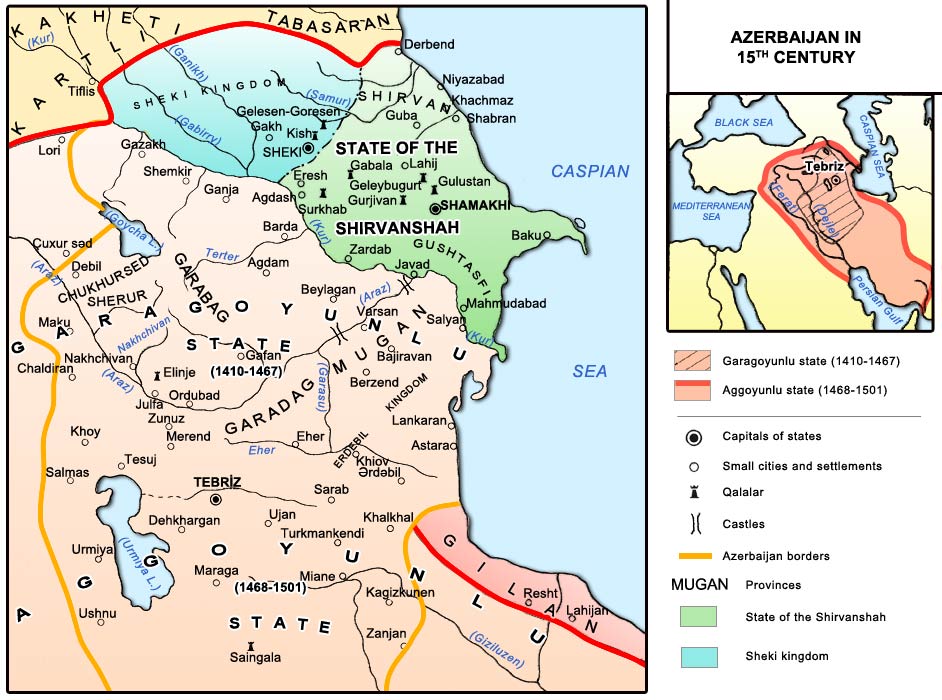 This smashed the occupation plans of the unit Christian bloc, which consisted of Armenian, Georgian, and Byzantium aggressors, taking advantage of Arabic Caliphate weaking. Slavian-Russian interventionists, making frequent attacks via the Caspian Sea, could not strengthen their position in Azerbaijan. The necessity of unification in the struggle against common enemy leads to the formation of unit religion, common traditions, and ceremonies, integration of population, which caused further strengthening of the ethnic-political union.
This smashed the occupation plans of the unit Christian bloc, which consisted of Armenian, Georgian, and Byzantium aggressors, taking advantage of Arabic Caliphate weaking. Slavian-Russian interventionists, making frequent attacks via the Caspian Sea, could not strengthen their position in Azerbaijan. The necessity of unification in the struggle against common enemy leads to the formation of unit religion, common traditions, and ceremonies, integration of population, which caused further strengthening of the ethnic-political union.
Nevertheless, durable stability did not establish due to the fact that none of the Azerbaijan countries, which appeared after the collapse of the Arabic caliphate, managed to turn into a durable, unit, and strong state, covering all territories of the country. Unit Christian bloc, consisted of Byzantium empire, Armenian and Georgian feudal lords, taking advantage of Caliphate's weakening, directed all its force against Azerbaijan at this time. The significant turning point began in the history of the Near and Middle East just in this period - the XI century. The Great Saldjuc emperorship, covering wide territories from Central Asia to the Mediterranean Sea and from Darband's passage to the Persian Gulf, appeared. Azerbaijan was included in the next Oghuz-Turkish state — Saldjuc emperorship.
Saldjuc period took a decisive part in Azerbaijan's historic fate. Turkish-Islam union gained definitive victory over Christian bloc (Byzantium empire, Armenian and Georgian feudal lords), attempting to occupy Azerbaijan, with Sultan Alp Arslan's defeat over the Byzantium empire in the Malazgird battle (August 26, 1071). It destroyed the plans of the Byzantium empire concerning the strengthening of its position in the Southern Caucasus and invasion scheme of Armenian and Georgian feudal lords
Thus, the plan on including of the Southern Caucasus into influence sphere of Christianity failure, Christian factor generally fell into a delay in this region.
Oghuz Turks, generally Turks definitely turned into the main ethnic-political factor in the whole Southern Caucasus and Southwest Asia as the result of saldjuc flow. Turkish-Islam factor plaid a definable role in the further history of the Near and Middle East, including the Caucasus for a long time.
New communities of Turks settled down in Azerbaijan during Saldjuc follow. Oghuz-saldjuc Turks of the same origin, adopted Islam, integrated with Azerbaijan Turks in a short time.
Thus, the formation of Azerbaijan people, whose genesis based on iskits (skits, skifs), saks, massagets, huns, bulgars, khazars, barsils, pechenegs, suvars, and especially oghuz turks (garagoyunlus, aghgoyunlus, saldjuck, etc), lived in different historical times (as B.C as A.D ), came to the end. Azeri-Turkic language became the main communication means in the whole Southern Caucasus. Simple and intelligible Azeri-Turkic language, ousting dialects, as well as Arabic and Persian, turned into the national language. Spreading of folk examples by ashugs' (folk poet and singer) paved the way for the appearance of writing literature patterns in Azeri-Turkic language.
Azerbaijan nation is one of the nations distinguished by its peculiarity.
Azerbaijanians made a great contribution to the treasures of the world
culture as an integral part of human history during the past two
thousand years. Our ancestors, using all primitives' achievements in culture,
created a rich specific cultural-spiritual heritage. As monuments, found in the
territory of Azerbaijan in the result of an archaeological dig, so folk-lore and
witing literature heritage, extant till nowadays testify this.
Heydar Aliyev
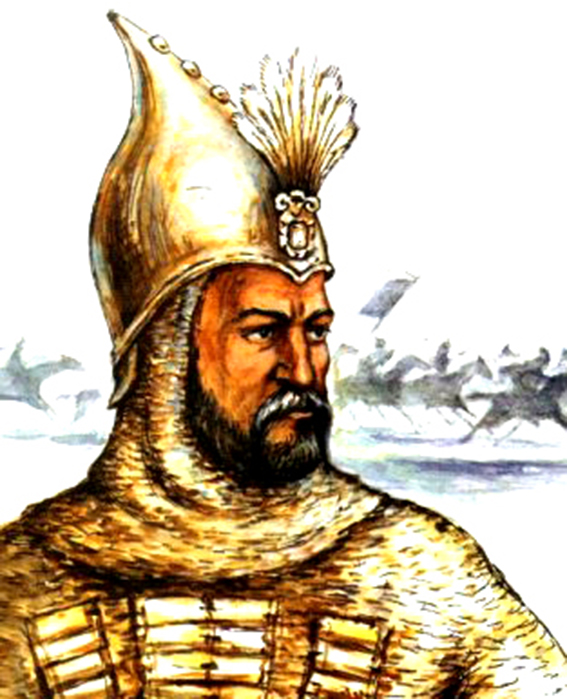 Shirvanshahs and Eldanizes states took an important role in the continuation and upgrade of Azerbaijan people's statehood traditions after the collapse of the Great Saldjuc emperorship.
Shirvanshahs and Eldanizes states took an important role in the continuation and upgrade of Azerbaijan people's statehood traditions after the collapse of the Great Saldjuc emperorship.
Eldanizes state, turning into one of the powerful countries of the Near and Middle East, plaid a significant role in Azerbaijan people's ethnic-political history. Unification of all Azerbaijan lands within the unit state during Eldanizes ruling caused a strong update in all spheres of economic, political, and cultural life. Art, trade, science, and culture developed still more. Internal and external trade relations expanded, madrasas (religious schools) were opened, mosques and rare architecture monuments were erected. The Renaissance of Azerbaijan culture is famous for the creation of Khagani, Nizami, Ajami.
Thus, the role of Turkic-Islam empires became larger in the Caucasus, as well as the whole of Near and the Middle East after the collapse of the Arabic Caliphate in the mid-IX century. States, ruled by Sadjis, Shirvanshahs, Salaries, Ravvadis, Shaddadis, Saldjucs, Eldanizes, Mongols, Elkanis-Hulakus, Chobanis, Djalayirs, Teymuris, Ottomans, Garagoyunlus, Aghgoyunlus, Safavis, Afsharis, Gadjars, and other Turkic-Islam dynasties, left a deep trace in statehood history not only of Azerbaijan, but also the Caucasus, Near, and the Middle East.
Aghgoyunlu state became a powerful military and political factor in the whole of the Near and Middle East during the ruling years of Uzun Hasan (1468-1478), the Azerbaijan great statesman. The statehood culture of Azerbaijan developed still more. Uzun Hasan carried out a policy of establishment of a strong centralized state, covered Azerbaijan lands. A special "Code of law" was drawn up by is order. Azerbaijan was the central province of the majority of these states, while Tabriz — the capital for a long period. Most Turkic-Islam empires were ruled by Azeri-Turkic dynasties.
The statehood culture of Azerbaijan enriched still more in the XV-XVIII centuries. Large Garagoyunlu, Aghgoyunlu, Safavi, Afshar, and Gadjar empires of the East were directly ruled by Azerbaijan dynasties. This significant factor had a positive influence on the internal and international relations of Azerbaijan, expanded military and political influence sphere of the country, usage place of Azerbaijan language, created favorable conditions for the development of Azerbaijan people's material and spiritual culture. Azerbaijan states took an active part in European-Est relations along with an important role in military and political life, international relations of the Near and Middle East in the aforesaid period.
 Far-sighted statesman tried to improve the position of taxpayers, develop settled economy fields, put an end to state officials' arbitrariness, and tribe heads' military-political independence.
Far-sighted statesman tried to improve the position of taxpayers, develop settled economy fields, put an end to state officials' arbitrariness, and tribe heads' military-political independence.
Uzun Hasan foresaw religious divergence and its effect on the state, the ethnic-political union of the country. Marring off her sister to Sheykh Djuneyd Safavi and daughter to Sheykh Heydar Safavi, he tried to prevent coming religious divergence and make peace between aghgoyunlus and safavis. Eminent military leader, closely observing changes in the world military science, tried to establish a strong regular army, increased the number of mercenaries, made preparations for fire-arm production and strong artillery foundation.
He invited armorers and military specialists from Italy for this purpose. Eminent statesmen paid special attention to the development of science and enlightenment. He gathered the most leading scientists of his time in the palace. About 60 scientists worked in the ruler's private library. Scientific assemble, consisting of eminent scientists of that time, operated in Uzun Hasan's palace. The Koran was translated into Azeri, "Kitabi-Diyarbakriya" was written by Abu Bakr Al-Tehrani, an eminent scientist of that time, by order of Uzun Hasan.
The role of Azerbaijan in the East-West relations encreased in the period of his ruling. Azerbaijan established wide diplomatic relations with European states along with traditional eastern countries. Azerbaijan envoys conducted diplomatic negotiations in the palaces of the Venetian Republic, Papcy, Neapol kingdom, Albania, Hungary, Poland, Germany, Burgundian duchy, Cyprus, Rodos, Trabzon emperorship, Moscovy princedom, and a number of eastern countries in the period of Uzun Hasan's ruling. Uzun Hasan's mother — Sara Khatun, the only female diplomat in the East at that time, a plaid important part in the negotiations, conducting with foreign states. The standing embassy of the Venetian Republic operated in the palace of Uzun Hasan, Tabriz. Azerbaijan plaid a significant role in the solution of international problems, representing common interests for the East and West.
Life and activity of Mahamad Jahan Pahlavan,
Gizil Arslan, Uzun Hasan, Shah Ismayil Khatayi
and other statesmen developed people's love
for native lands and statehood feelings, turned
it into the most important purpose of life.
Heydar Aliyev
The new evolution stage began in the history of Azerbaijan statehood in the late XV-early XVI centuries. Shah Ismayil Khatayi(1501-1524), the Uzun Hasan's grandson and eminent statesman, completed the work, begun by his grandfather, and managed to unify all Azerbaijan lands in the north and south under his ruling. He created a unit centralized Azerbaijan state — Azerbaijan statehood culture developed still more, Azeri became the official language at Safavis' ruling. Safavis state with the capital Tabriz.
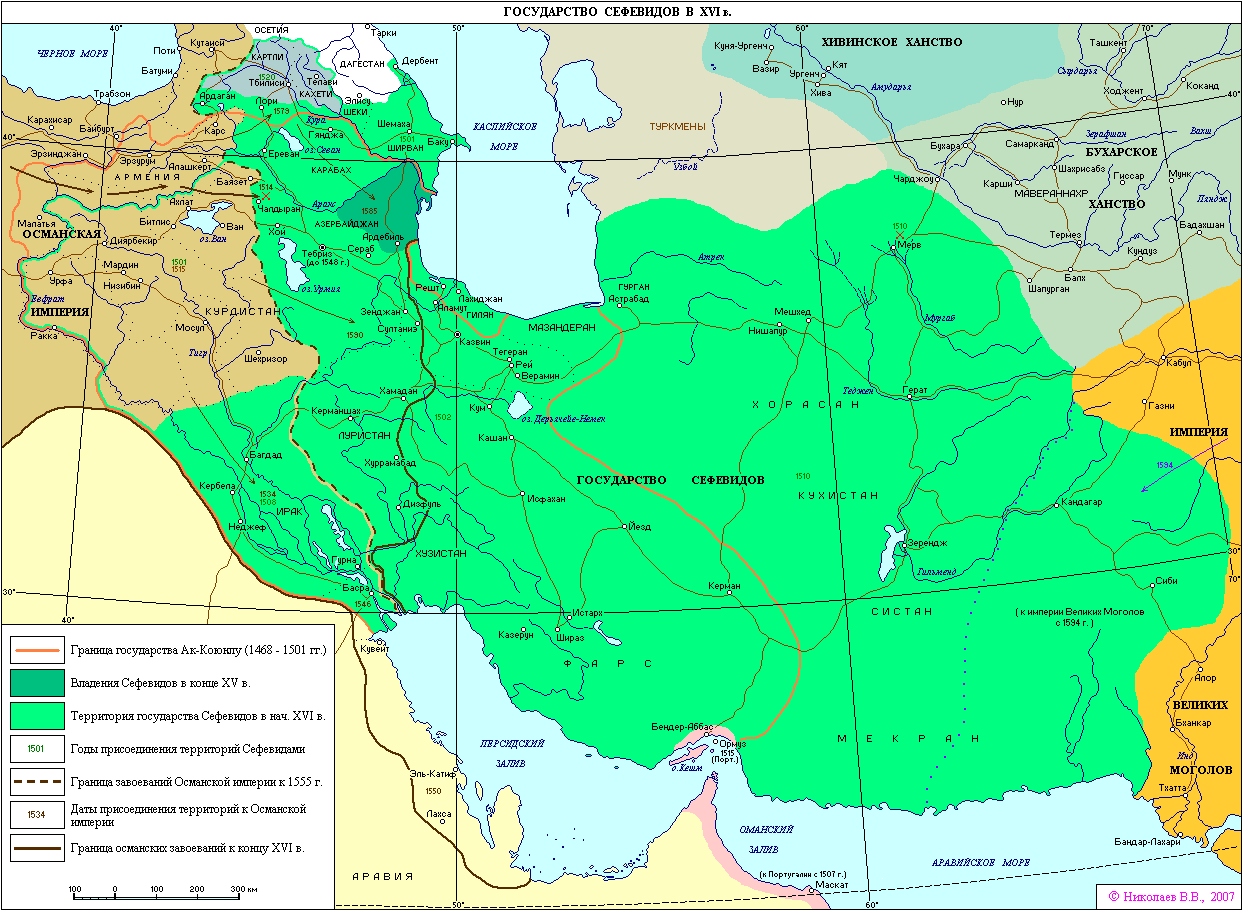
Safavi state turned into one of the powerful empires of the Near and Middle East as the result of successful reforms, internal and foreign policy, carried out by Shah Ismayil, Shah Tahmasib, Shah Abbas, and other Safavi rulers.
The mechanism of perfect state management was created for the ruling of the large Safavi empire. Safavi rulers got religious power along with temporal one. Central power was strengthened in this way.
The Supreme consultative assembly or Supreme kingdom council (Madjlisi-ala) operated in the palace. The perfect bureaucratic system was established for the regulation of central and local government bodies. The supreme divan (council) controlled all court cases throughout the country.
Safavis' military forces turned into one of the most powerful armies as a result of reforms, carried out by Safavi rulers, particularly Shah Abbas. During Safavis' ruling, the role of the Azerbaijan language increased throughout the Near and Middle East. Diplomatic negotiations with foreign envoys, as a rule, were conducted in Azeri.
Azerbaijan maintained diplomatic relations with many European states from the Black Sea and the Mediterranean Sea basin to Britain and the Scandinavian peninsula during Safavis' ruling, continuing Aghgoyunlus' foreign policy.
Negotiations with a number of western diplomats were conducted in the palaces of Shah Ismayil Khatayi, Shah Tahmasib, Shah Mahammad Khudabanda, Shah Abbas and other Safavi rulers to establish close mutual relations. Azerbaijan continued to play an important role in mutual relations between the East and West at Safavis as in the Aghgoyunlus' period as well.
Eminent Azerbaijan military leader Nadir Shah Afshar (1736-1747), come to power after the collapse of the Safavi state, expanded the borders of the Safavi empire still more. This great ruler of Afshar-Turk origin occupied Northern Indian, including Dehli, in 1739. But Azerbaijan ruler's plans on the establishment of the powerful centralizing state in these wide territories failed. The large empire collapsed after his death. Local states, striving for independence, appeared in the Azerbaijan territories still inter vivos of Nadir shah. Thus, Azerbaijan divided into small states like khanates and sultanates in II half of the XVIII century. The military-political decay stage of the country began. Though separate khans, trying to keep the ancient statehood traditions of Azerbaijan, attempted to unify the country, they did not have an effect.
Political disunity became deeper and foreigners got a suitable chance to occupy Azerbaijan. Azerbaijan dynasty Gadjars (1796-1925) came to power in Iran in the late XVIII century. They began to carry out subordination policy of all territories, once been under the power of their ancestors Garagoyunlus, Aghgoyunlus, Safavis, and Nadir Shah, to central power.
Thus, durable wars period between the Gadjars and Russia, trying to occupy the Southern Caucasus, began.
Azerbaijan turned into a bloody battlefield between two large states. Armenian and Georgian generals, leading military operations, took advantage of the situation and committed genocide against Azerbaijan civilians.
According to agreements by Gulustan (1813) and Turkmanchay (1828), Azerbaijan was divided between two empires: Northern Azerbaijan was attached to Russia, while Southern Azerbaijan to Iran, ruled by Gadjars.
Thus, new political-geographic expressions appeared in Azerbaijan: "Northern Azerbaijan" ("Russian Azerbaijan") and "Southern Azerbaijan" ("Iranian Azerbaijan"). In contradictory to Southern Azerbaijan, under the power of an outdated shah regime, Northern Azerbaijan integrated into the comparatively leading culture-economical of Russia and Western Europe.
Azerbaijan people's russification stage began in the north, while personification in the south.
Gulustan and Turkmanchay agreements, signed in 1813 and 1828,
divided Azerbaijan, its historical lands, and people into two-part.
Heydar Aliyev
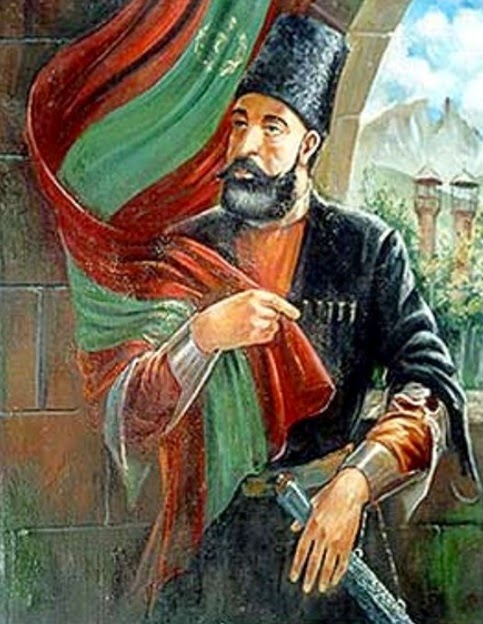 Russia began to conduct ousting policy of Azerbaijanians from the Caucasus to move forward the East, make its way to warm seas. First of all, it relied on the Christian population of the Caucasus, particularly Armenians, removed from Iran and Turkey, as well as Georgians. Russia began to convert the local Muslim population into Christianity by force.
Russia began to conduct ousting policy of Azerbaijanians from the Caucasus to move forward the East, make its way to warm seas. First of all, it relied on the Christian population of the Caucasus, particularly Armenians, removed from Iran and Turkey, as well as Georgians. Russia began to convert the local Muslim population into Christianity by force.
Thus, the Christian factor revived in the Southern Caucasus with the beginning of large-scale occupations by Russia. The Tsar government attempted to resettle the Christian population from Russia into Azerbaijan territories.
As this policy failed at first, Russia resettled Armenians from neighbor countries into occupied Azerbaijan lands, particularly mountain regions of Karabakh, Iravan, and Nakhichevan khanates in order to create props in the Southern Caucasus. It established an artificial "Armenian province" in the western lands of Azerbaijan (former Iravan and Nakhichevan khanates), bordering with Turkey, with a special purpose. Thus, the basis of a future Armenian state was laid on the Azerbaijan lands.
Azerbaijan's population of the northwest (at the border with Georgia) was subjected to converting to Christianity by the Georgian church. Georgian feudal lords, taking advantage of the situation, began to realize their dream concerning converting the Muslim population into Orthodoxy and their georgianification with the support of Russian colonists.
Besides, Russia abolished the independent Albanian church and subordinated it to the Armenian Gregorian church in 1836. So, a more favorable condition for converting Albanians into Gregorian faith and armeniafication was created. Basis of Armenians' new territorial claims was laid. But Russia was not satisfied with it and armed Armenians against the Turkic-Moslem population that lead to genocide.
The colonial policy of czarism and its assistants met with the local population's obstinate resistance. However, colonists managed to convert some Albanian-ingiloy villagers into Christianity due to the distribution of confiscated Azerbaijan bays' lands and granting privileges. Colonists were not content with it and turned ancient Albanian churches into Orthodox churches, constructed new ones. This policy was carried out under the direct control of the Caucasian governor.
At the same time resettlement of the Christian population from Russia into Azerbaijan occupied a significant place in the policy of czarism along with converting of local people into Christianity. The purpose was to strengthen the role of the Christian factor in the Caucasus, including Azerbaijan.
The same policy was carried out by the reactionary Shah regime in the south lands of Azerbaijan.
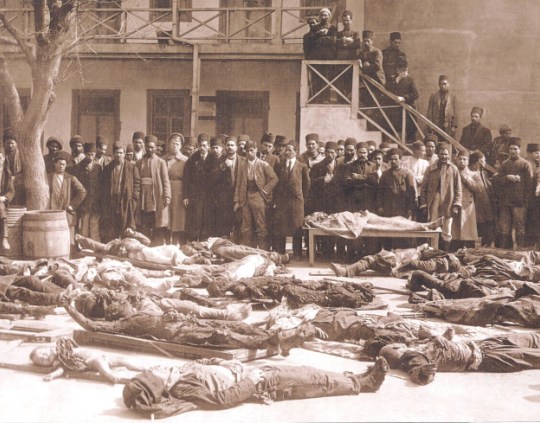
Azerbaijan people's struggle for freedom strengthened in the north and south. Russia and Iran waged bloody wars with one another, became true allies to crush Azerbaijan people's struggle for freedom, and not allow the unification of our states. Nevertheless, the Azerbaijan people did not stopped the struggle for independence against the Russian government and Iranian shah regime, stirred up rebellions, and met a loss.
Azerbaijan people fought for the newly independent and democratic state during the First Russian revolution (1905-1907) and the 1905-1911 years revolution in Iran.
Azerbaijan people rose to revive their national statehood traditions in the north and south during the First World War.
Struggle for freedom resulted in unexampled tragedies in Northern Azerbaijan. Sh. Shaumian's Dashnak-Bolshevik government committed a terrible genocide against the Azerbaijan people in March 1918. Turkey held out its assisting hand to Azerbaijan. The freedom movement won. The Azerbaijan Democratic Republic, the first democratic republic in the East, was created in Northern Azerbaijan on May 28, 1918.
Independent and democratic Azadistan state (Freedom state) was established in South Azerbaijan in 1920. Sheikh Mahammad Khiyabani became head of the Azadistan National government. Wide national democratic reforms were carried out in both Azerbaijan states.
Thus, Azerbaijan people, taking advantage of the historical situation, originated from the First World War, managed to revive its ancient statehood traditions in the north and south, proved that it deserved and capable to live independently one more. Like in European countries, in Azerbaijan also application of democratic management rules specific to parliamentary republic started. It was a very big historical achievement of the Azerbaijani people.



